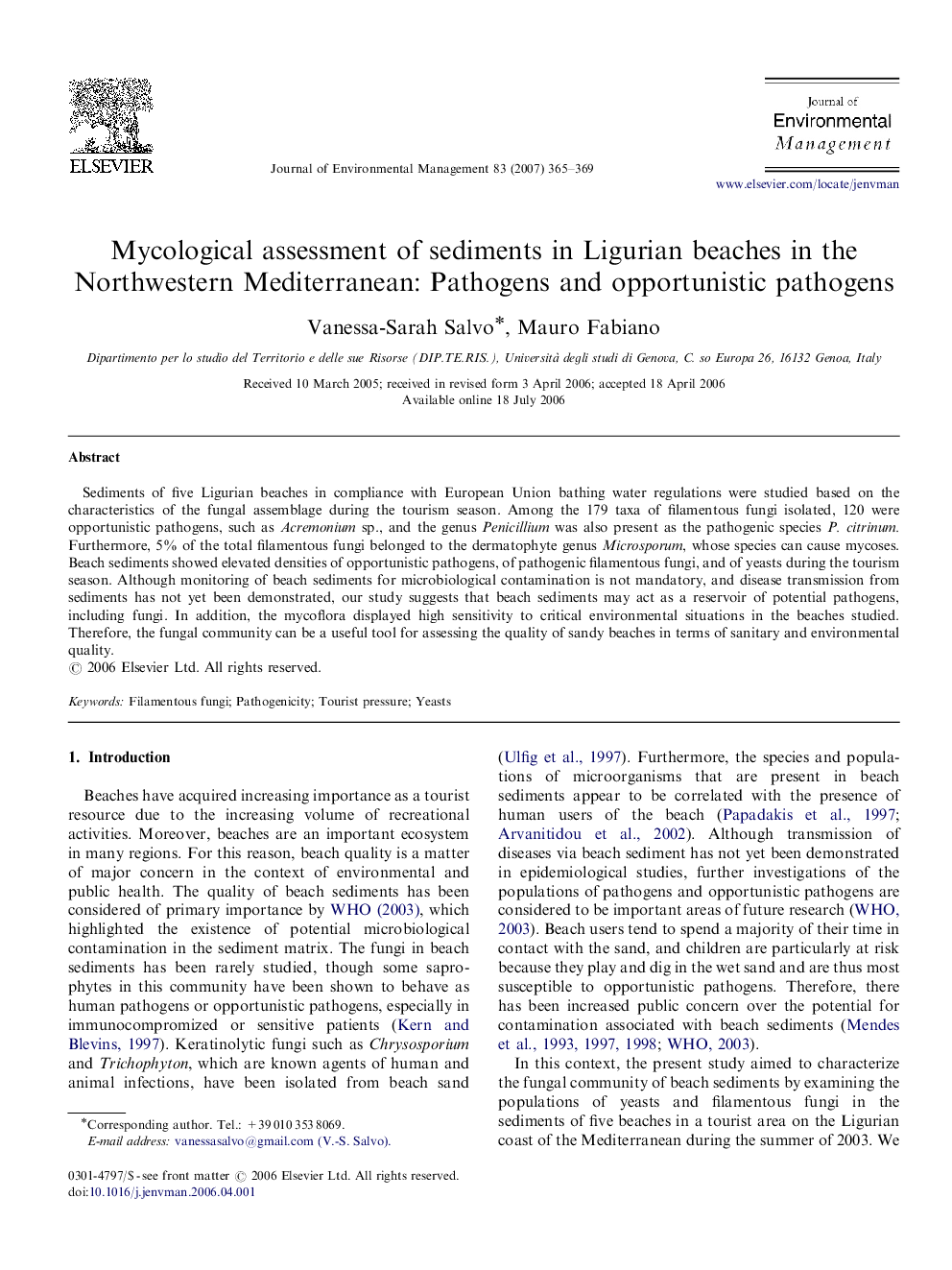| Article ID | Journal | Published Year | Pages | File Type |
|---|---|---|---|---|
| 1058872 | Journal of Environmental Management | 2007 | 5 Pages |
Sediments of five Ligurian beaches in compliance with European Union bathing water regulations were studied based on the characteristics of the fungal assemblage during the tourism season. Among the 179 taxa of filamentous fungi isolated, 120 were opportunistic pathogens, such as Acremonium sp., and the genus Penicillium was also present as the pathogenic species P. citrinum. Furthermore, 5% of the total filamentous fungi belonged to the dermatophyte genus Microsporum, whose species can cause mycoses. Beach sediments showed elevated densities of opportunistic pathogens, of pathogenic filamentous fungi, and of yeasts during the tourism season. Although monitoring of beach sediments for microbiological contamination is not mandatory, and disease transmission from sediments has not yet been demonstrated, our study suggests that beach sediments may act as a reservoir of potential pathogens, including fungi. In addition, the mycoflora displayed high sensitivity to critical environmental situations in the beaches studied. Therefore, the fungal community can be a useful tool for assessing the quality of sandy beaches in terms of sanitary and environmental quality.
